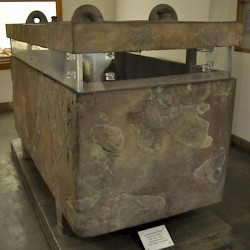Berlin, Pergamon Museum
Q157298The Pergamonmuseum is probably Berlin’s most famous cultural institution. It contains three major collections which, each in itself, might have been fine museums: a classical department, a department of ancient Near Eastern art, and a department of Islamic art. What they have in common is their connection to the former Ottoman Empire. In each of these departments, you will see splendid works of art.
The museum is named after the city of Pergamon, where German archaeologists found the famous altar that now stands in the central room of the museum. (In fact, the museum was built around the altar.) The north wing is devoted to Greek and Roman art, and you will find archaic sphinxes, classical reliefs, and so on.
The south wing contains the department of ancient Near Eastern art, which includes the famous Ištar Gate from Babylon and the ancient procession road, which appears to date back to the Seleucid age. Among the other objects are orthostats from Tell Halaf, prehistoric finds from Uruk, the royal tombs of Assur, bronzes from Luristan, objects from Nineveh, and of course lots of cuneiform tablets. Among the most fascinating documents is a tablet that mentions the Judaean king Jehoiachin.
If you go upstairs, you will find yourself in the department of Islamic art. Again, a complete building has been moved from its original location to the German capital: this time, a substantial part of the wall of the early Islamic Mshatta, one of Jordan’s desert castles. But there’s a lot more to see. I must have been gazing at a splendid manuscript of Saadi’s Rose Garden for at least half an hour.
It is easy to spend a day in the Pergamonmuseum, and that is also a problem: it can be extremely crowded. When I was there last June, I could easily enter the building, but last week, early August, there was a long queue. When I entered the museum, it felt muggy, and I wondered whether the humidity wasn’t dangerous for the objects.
This museum was visited in 1988, 1989, 2000, 2010.



































































